Search Results
Fine Jewelry University Articles matching: “tanzanite with diamond ring”
Showing only FJU Article results. Click here to show all results.
Fine Jewelry University (Show All FJU Articles)
-
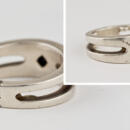
Jewelry Solder: What You Should Know
Solder is the unseen “glue” that holds most jewelry together. If you have ever had a ring sized, a chain repaired, or your wedding set joined together, you have very likely seen solder in action. But, what … will focus our discussion on gold jewelry, but the same concepts also apply to silver and platinum as well. If your ring is made out of 14 karat gold, you know that approximately 56% of it is gold with the rest being made up by a variety… of the final alloy changing its color, hardness, flexibility, and more. That’s great, but what does this have to do with solder? With solder a different set of alloy metals are used than with regular karat gold with the purpose of …
-
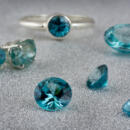
Gem in the Spotlight: Blue Zircon
… for jewelry wearers and gem collectors alike. Plus, it out sparkles the other December birthstones (Blue Topaz and Tanzanite) making it a great gift for anyone born in December or who simply appreciates dazzling, … of zircon creates one of the liveliest displays found in any colored gem. In fact, before any of the manmade diamond simulates were made, the colorless version of zircon was used in jewelry to mimic diamond. Why? Natural zircon is known for…, brown, or red variety of Zircon. Jargon is the colorless, pale gray, or pale yellow variety of Zircon. Matura Diamond is another trade name for colorless Zircon. Starlite is the name for the blue gem variety of Zircon. The color of …
-
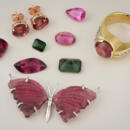
Gem in the Spotlight: Tourmaline
…index of 1.624 to 1.644 and a Mohs hardness of 7 to 7.5 which makes it softer than topaz or sapphire and harder than tanzanite or opal. Tourmaline is found in a huge variety of colors (sometimes even within the same gem), and some of these … unique property. One of tourmaline’s most distinctive traits is its ability to be multicolored as mentioned above with watermelon tourmaline. The gemological term for this is parti-colored tourmaline. This includes bi-color, tri-color, …
-
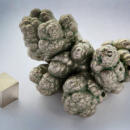
What to Do When Your Ring Irritates Your Skin
…try a new design. We do custom jewelry design , and one of our favorite projects is to take the raw materials (gold, diamonds, gemstones, etc.) from a client’s existing ring and use them to make a new and exciting creation. We can reuse the …Nothing is more frustrating than being unable to wear your engagement ring or other jewelry because it irritates your skin. Don’t worry. There are many options you have when faced with this …but their root causes and solutions are very different. Physical Irritation This can be caused by the design of the ring, a rough area that is the result of normal wear and tear, or a ring that is not sized correctly. If the ring is too …
-
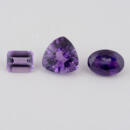
Gem in the Spotlight: Amethyst
…. For reference, amethyst is roughly as hard as tourmaline, softer than sapphire and topaz, and harder than opal and tanzanite. This makes it a durable gemstone that is resistant to scratching and chipping. It is also resistant to heat and …so keep that in mind when storing your amethyst jewelry. If you have an amethyst ring or other piece of jewelry with diamonds or other gemstones, you should be careful when cleaning it. You should use a soft brush to gently scrub the …
-
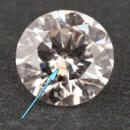
What Are Lab Grown Diamonds?
In the simplest terms, lab grown diamonds are diamonds that have been made by people instead of mined out of the earth. If it’s so simple, you might wonder …this sentence. The complexity arises from the fact that lots of different terms have been used to describe lab grown diamonds and their cousins, and not everyone uses these terms in the same way. So, let’s begin with some vocabulary. … mean man-made, copied, unreal, or even imitation. But, in this context, what do we mean when we say “synthetic diamond”? In the gemological world, synthetic is a highly technical term. When speaking technically, synthetic gems are man-made …
-

How Are Lab Grown Diamonds Made?
The dream of making a beautiful and valuable diamond from simple carbon has long captivated the imagination of scientists and visionaries alike. Just like the alchemists…, many have tried to achieve this impressive feat. We have only recently been able to produce gem quality, lab grown diamonds that are large enough to be used in jewelry. But, how is it done? Early Efforts Throughout history, many people …. Henri Moissan was one of the early pioneers in the field. In 1893, he claimed to have successfully made a diamond by heating charcoal to 3,500 degrees Celsius inside a carbon crucible. Many attempts were made to reproduce his techniques …
-
Caring for and Cleaning Your Jewelry
How to Clean Jewelry A diamond‘s spectacular beauty is due to its light show. Diamonds make light reflect, show its many colors, and dazzle. To … and lotions add a coating that stops the light show. Dust and dirt stick to the grease and oils creating a lifeless diamond. Cleaning your diamond jewelry at home is simple and rewarding. Use a soft toothbrush and mild soap then rinse … key to diamond cleaning is the underneath side or pavilion. The light needs a clean surface to bounce upward. The diamond may need to be scrubbed several times before all the build up is removed. Some don’ts of jewelry cleaning. Never use …
-
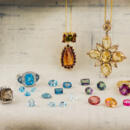
Gem in the Spotlight: Topaz
…ht. History and Lore Topaz in its pure form is naturally colorless, clear like a diamond. The famous “Braganza Diamond” was thought to be the largest diamond ever found (prior to the Cullinan Diamond) at 1,680 carats and was set in the Portu… to put coatings on lenses for glasses and cameras. It is also one of the processes that is used to create lab grown diamonds . A thin, multi-colored film is bonded on the surface of colorless topaz to create all the colors you see in Mystic…